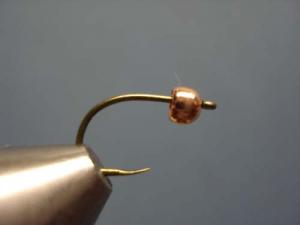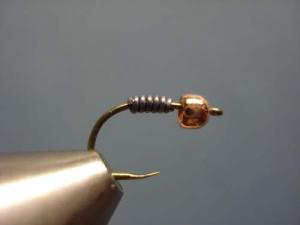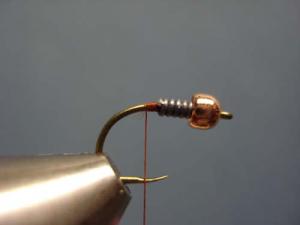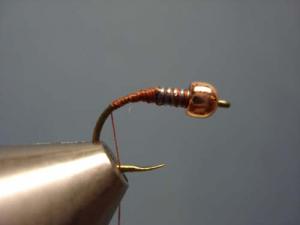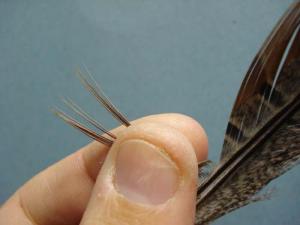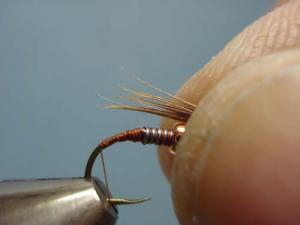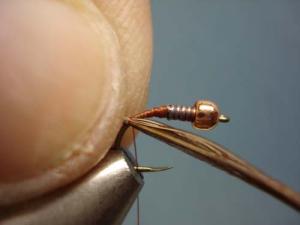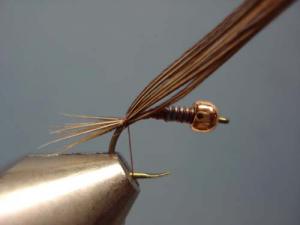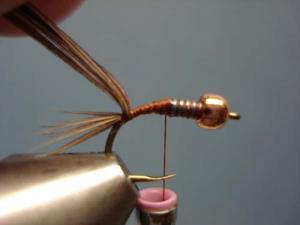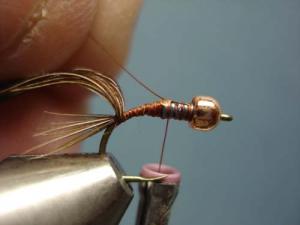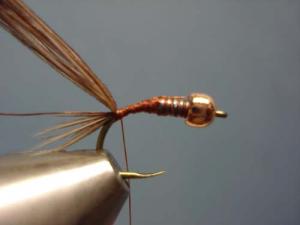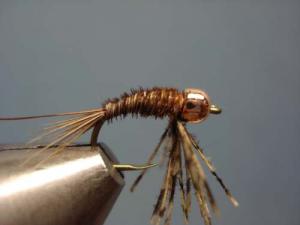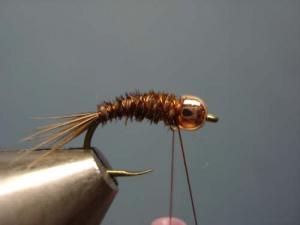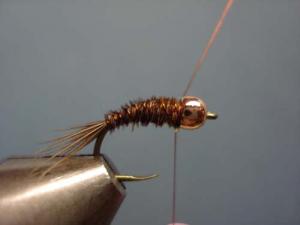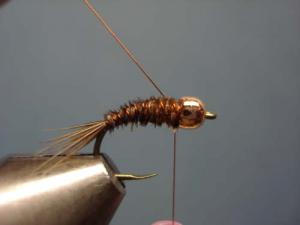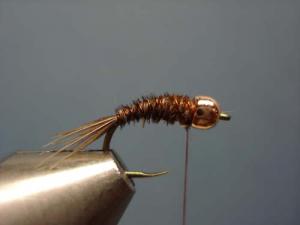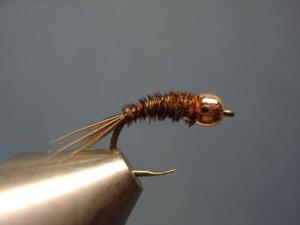Bead Head Pheasant Tail Nymph
Fly and Photos by Loren Williams
This pattern is a variation of the American Pheasant Tail nymph as popularized by Al Troth, which is really an embellished version of Frank Sawyer's original Pheasant Tail Nymph.
Bead Heads, placing metal beads onto hook shanks for added flash and weight, is not anything new. I'm not certain of the complete history behind the process, but bead head flies gained momentum out of the competition fly-fishing circuit in Eastern Europe and Scandinavia where the prohibition of accessory leader weight made weighting flies and art form. With the advent of heavier Tungsten beads, the possibility now exists to tie very heavy, yet slim flies on all hook sizes. By eliminating weight on the leader, anglers can now angle to fish in deep fast water and maintain contact with their flies-an important concept!
The Bead Head Pheasant Tail nymph shown here is but one variation, but indeed it is exactly how I tie and fish it for my personal use. I typically carry these in sizes #14 through #18 tied on barbless scud hooks. I like the gap to negate the gap-closing bead, and I feel they give a better bite. Barbless hooks are a mainstay in my arsenal and I use manufactured blarbess hooks when possible.
Notice that the pattern is about "plain Jane" as can be; but rest assured that this pattern and some slightly modified cousins have taken hundreds of trout, whitefish, and grayling! Some may argue the needs for legs, but for me it is an unnecessary added step. Likewise with the peacock thorax. Sawyer's original model lacked both and it continues to fish well to this day!
MATERIALS
Hook: TMC 2499SPBL
Bead: Copper Tungsten
Weight: Fine lead wire
Thread: Brown
Tail: Cock Pheasant Tail Fibers
Rib: Fine Copper Wire
Abdomen: Cock Pheasant Tail fibers; wrapped
Click photos to enlarge!
